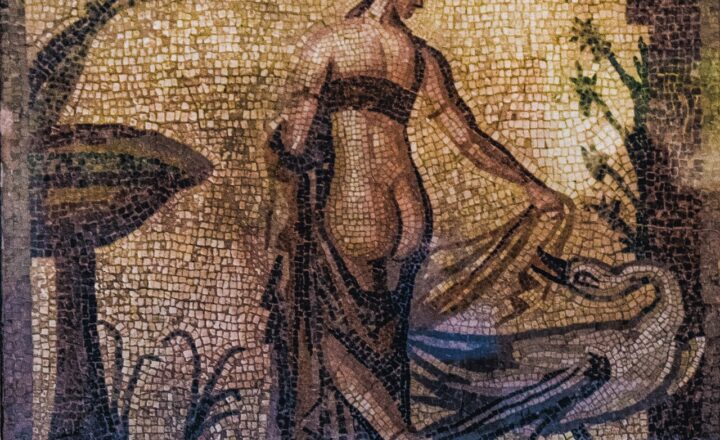Uncovering Forgotten Mysteries: Stories of Ancient Artifacts and What They Mean
November 14, 2024

Ancient artifacts carry a whisper of the past, teasing historians, archaeologists, and curious minds alike with their secrets. Each object offers a glimpse into the lives, cultures, and beliefs of civilizations long gone, transforming our understanding of human history. This article delves into some of the most captivating ancient artifacts, their intriguing stories, and the meanings behind them.
1. The Rosetta Stone: Key to Ancient Egypt
Discovered in 1799, the Rosetta Stone is perhaps one of the most famous artifacts in the world, serving as the key to deciphering Egyptian hieroglyphics. This granodiorite stele features inscriptions in three scripts: Greek, Demotic, and hieroglyphic. The presence of the same text in multiple languages allowed linguists, especially Jean-François Champollion, to unlock the long-lost Egyptian writing system by comparing the known Greek text with the hieroglyphs.
The Rosetta Stone not only offered a linguistic breakthrough but also revealed the cultural richness of Ancient Egypt, showing how the civilization continuously adapted through conquests and governance. It reminds us that understanding language is vital in unlocking the stories of ancient peoples and their historical narratives.
2. The Terracotta Army: Guardians of the Emperor
In 1974, farmers unearthed a pit filled with thousands of life-sized terracotta warriors near the tomb of China’s first emperor, Qin Shi Huang. The Terracotta Army, consisting of over 8,000 soldiers, horses, and chariots, was buried to protect the emperor in the afterlife. Each figure showcases individual characteristics and ranks, exemplifying the craftsmanship of the era.
The discovery of the Terracotta Army has not only shed light on the military practices of ancient China but also on the emperor’s belief in the afterlife. This monumental site reflects the complexities of social hierarchy, power, and spiritual beliefs, inviting observers to ponder the lengths to which individuals would go to secure immortality.
3. The Elgin Marbles: A Legacy of Athenian Artistry
The Elgin Marbles, a collection of classical Greek marble sculptures that adorned the Parthenon and other structures on the Acropolis of Athens, have sparked much debate since their removal by Lord Elgin in the early 19th century. The intricately carved figures represent scenes from mythology and historical narratives, showcasing the artistic prowess of ancient Greek sculptors.
Their current location in the British Museum raises questions about cultural heritage, ownership, and the preservation of history. The debate surrounding the return of the marbles to Greece underscores the importance of context in understanding artifacts and how they relate to the identity of their originating cultures.
4. The Mask of Tutankhamun: Royal Secrets
The golden mask of Tutankhamun, discovered in his tomb in 1922 by Howard Carter, is iconic in its representation of ancient Egypt’s burial practices and the artistry of its time. Crafted from gold and inlaid with semi-precious stones, the mask was intended to guide the young pharaoh in the afterlife, a testament to the Egyptians’ beliefs about mortality and spirituality.
Beyond its beauty, the mask symbolizes the mystery surrounding Tutankhamun’s reign, which lasted only ten years and was marked by significant religious and political upheaval. The mask captivates not just due to its luxurious design but also because it embodies the fascinating intertwinement of history, spirituality, and artistry in ancient civilizations.
5. The Nazca Lines: Geoglyphs of Peru
Among the most intriguing ancient artifacts are the Nazca Lines, colossal geoglyphs etched into the desert plains of southern Peru. These massive designs, which depict various fauna and geometric shapes, have confounded researchers regarding their purpose. Some theories suggest they were created for astronomical calendars, while others propose they were ritual offerings to deities.
The scale and precision of the Nazca Lines hint at a sophisticated understanding of geography and astronomy by the Nazca culture. Their enigmatic presence continues to inspire awe and invites speculation, representing the inherent human desire to connect with the stars and the unknown.
6. The Antikythera Mechanism: An Ancient Computer
Unearthed from a shipwreck off the coast of Antikythera, Greece, the Antikythera Mechanism is considered the oldest known analog computer. Dating back to the 2nd century BCE, this intricate device was used to predict astronomical positions and eclipses for calendrical and astrological purposes.
The mechanism reveals the remarkable technological advancements made in ancient Greece, challenging the notion that such complex machinery emerged only during the Renaissance. The intricate gears and bronze framework showcase the ingenuity of the time and stimulate curiosity about the capabilities of ancient technologists.
Conclusion: The Stories We Uncover
Each of these artifacts carries a story, forming a tapestry of human experience that transcends time. They challenge us to delve deeper into our understanding of history, questioning what we know about ancient cultures and the messages they intended to convey. In a constantly evolving world, these relics prompt reflection on our own values, beliefs, and the civilizations that preceded us. They remind us that within each artifact lies a connection to the past, a bridge to understanding human history, and a vision of the future. The mysteries of our ancestors await those curious enough to uncover their tales and honor their legacy.








